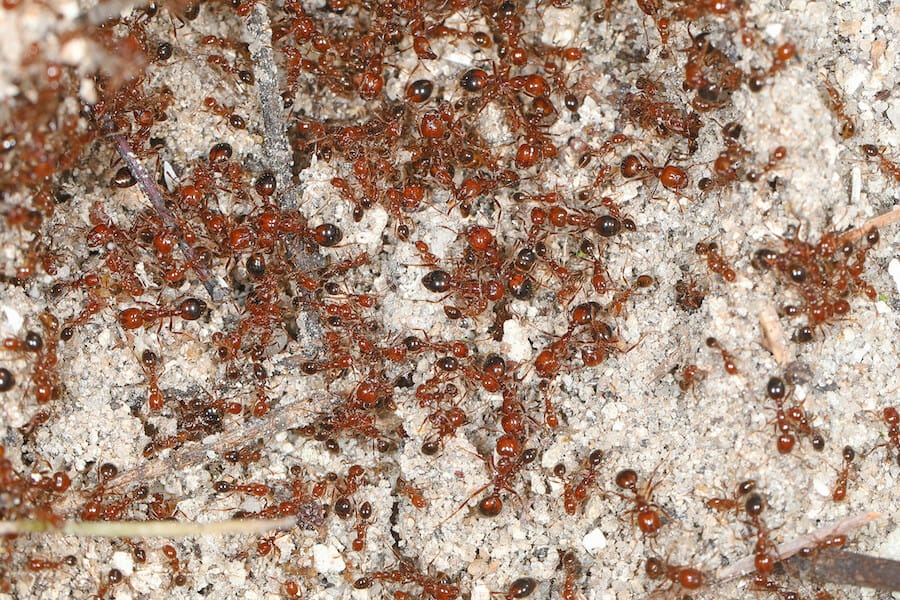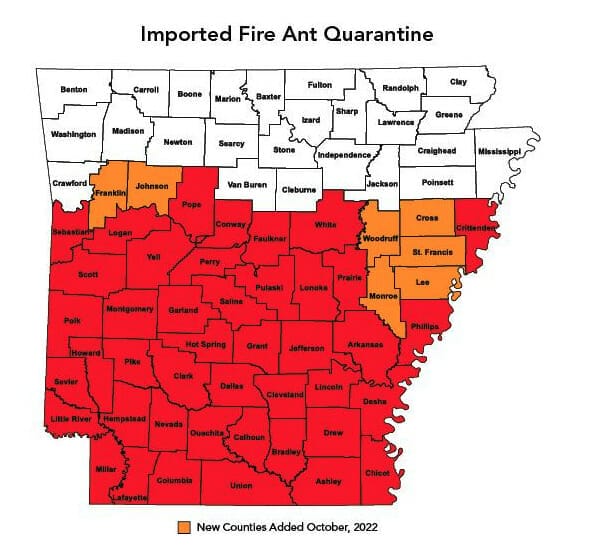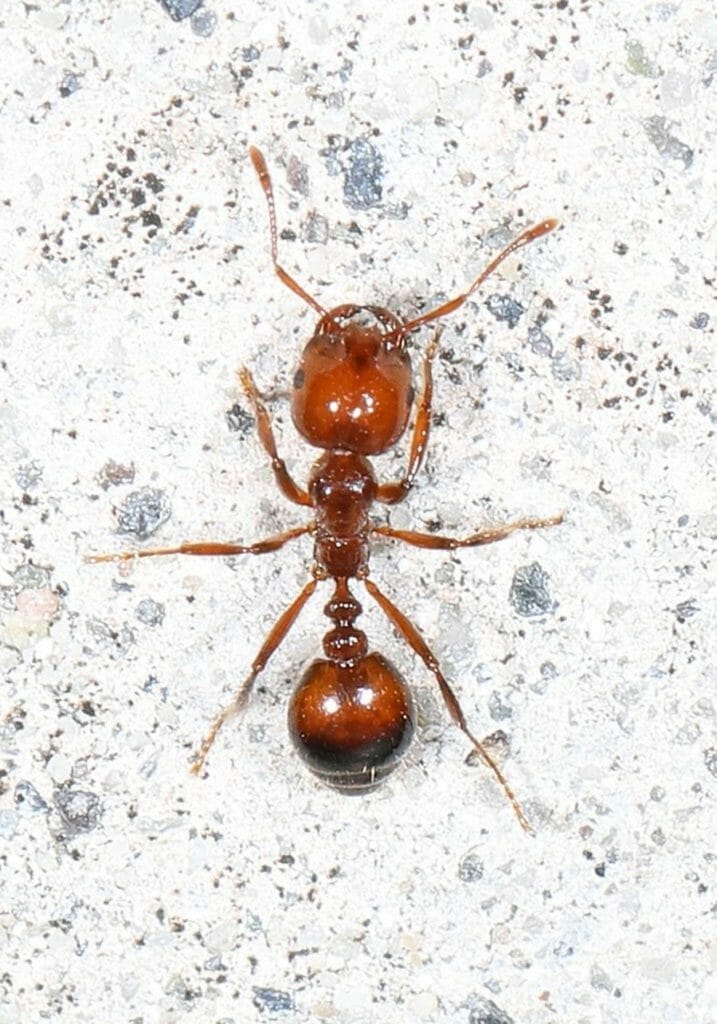

Uh oh...
It appears that you're using a severely outdated version of Safari on Windows. Many features won't work correctly, and functionality can't be guaranteed. Please try viewing this website in Edge, Mozilla, Chrome, or another modern browser. Sorry for any inconvenience this may have caused!
Read More about this safari issue.

I was attending a teacher workshop at the Audubon Center in Little Rock when I suddenly felt a burning sensation spread across my Chaco-covered feet. A lot of stomping followed the unpleasant feeling, and a closer inspection of the discomfort led to the discovery that I had disturbed a fire ant mound. The army of ants angrily marched across my toes, biting and stinging as they moved along.
This was my first experience with fire ants and one I hope I don’t have to repeat. However, it turns out that these fiery menaces are an invasive species that are slowly but surely moving across the state. While these tiny terrors may seem insignificant individually, their collective impact on agriculture and landowners in the state has been nothing short of disastrous, leading to a federal quarantine that currently impacts 50 counties in Arkansas.

This photo and cover photo courtesy of Judy Gallagher, cc by 2.0.
The Invasion of Fire Ants
Unlike the British invasion, which brought the Beatles to America (including Walnut Ridge), this invasion brought a different kind of bug. Originally hailing from South America, red fire ants first made their way to American soil via the port of Mobile, Alabama, in the 1930s. Since then, the ants have firmly established themselves in the Southern United States, including Arkansas, where they were first reported in Union County in 1958.
The red imported fire ant (known as fire ant or RIFA) is characterized by its reddish-brown body, aggressive nature, and painful sting that can cause severe allergic reactions in some individuals. Beyond their spicy bites delivered to unsuspecting human feet, fire ants are infamous for the destruction they cause to ecosystems, agriculture and personal property.
Note: There are also black imported fire ants in Arkansas, but they are primarily limited to a few counties along the Mississippi River. Red imported fire arts are the primary threat to the state.

Fire Ants on the Farm
Fire ants can be detrimental to the farm and lead to loss of crops and damage to fields, equipment and livestock. The ants feed on and destroy crops such as corn and soybeans and will also feed on beneficial pollinators like bees. They can disrupt the soil structure and build large mounds that destroy fields. Fire ants will bite livestock and have been known to infest expensive farm machinery.
In Your Yard
Landowners in Arkansas have also been grappling with the presence of fire ants. The pests are notorious for colonizing lawns, gardens and recreational areas. Their mounds are large, ugly and dangerous to pets and children playing outdoors. Moreover, the painful stings inflicted by fire ants hurt and can cause deadly reactions such as anaphylaxis in rare cases.

Image courtesy of Arkansas Department of Agriculture.
Arkansas Fire Ant Quarantine
To combat the spread of fire ants and mitigate the damage they cause, the U.S. Department of Agriculture has implemented a quarantine in 50 counties in Arkansas. The primary purpose of this quarantine is to prevent the movement of fire ants and their infested materials, such as sod, soil, plants and hay, to uninfested areas within and outside the state. Farmers and businesses that sell specific products must agree to certain procedures that help limit the spread of fire ants. The quarantine is enforced by the Arkansas State Plant Board.
An Uphill Battle to Effective Removal
Extreme measures taken in the 1960s and 70s when pesticides were far less regulated were unsuccessful, so it’s unlikely that completely eradicating these ants will ever be possible. You can take some measures to manage fire ants on your property; fall is one of the best times to tackle the problem. Fortunately, fire ants aren’t fans of colder weather, so there is a limit to how far north they can live successfully year-round.
While chemicals have a lot of success in treating infestations, many people don’t want to cover their yards with many pesticides. If you are like me, you may prefer more natural options for treatment. Thankfully, the University of Arkansas Division of Agriculture has put together a document outlining Fire Ant Control in Two Easy Steps, including effective chemical control methods and some less-toxic treatment options.

Photo courtesy of Judy Gallagher, cc by 2.0.
Arkansas’s Cooperative Extensive Service has been instrumental in helping Arkansans battle these invasive ants by providing resources and assistance to landowners. Contact your local extension service if you have a problem with fire ants, especially if you are outside the quarantine zone.
By understanding the problems associated with fire ants and taking proactive steps, Arkansans can better protect their lands and resources from this fiery menace and preserve the natural beauty of the Natural State.
Are you interested in learning more about invasive species in Arkansas? Check out these articles.
Join the Conversation
Leave a Comment
2 responses to “The Burning Issue: Fire Ants Wreak Havoc in Arkansas”
 Leave a Reply
Leave a Reply
We do the work.
You check your email.
Sign up for our weekly e-news.
Get stories sent straight to your inbox!












 Leave a Reply
Leave a Reply
We live outside of Van Buren and are having our second year of fire ants invasion. We have used vinegar and Dawn dishwashing liquid to eradicate the mounds and ants.
[…] © Only In Arkansas […]